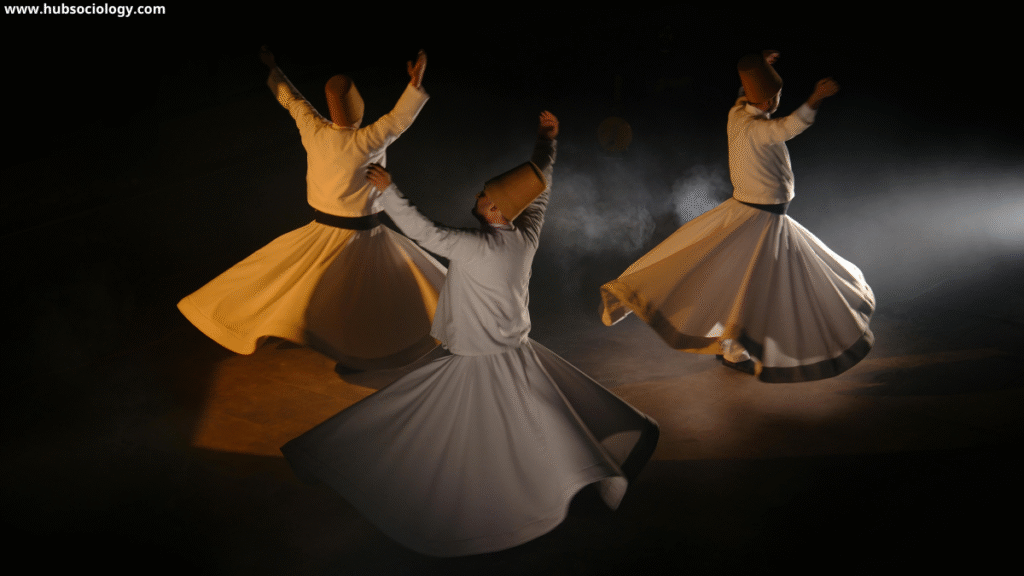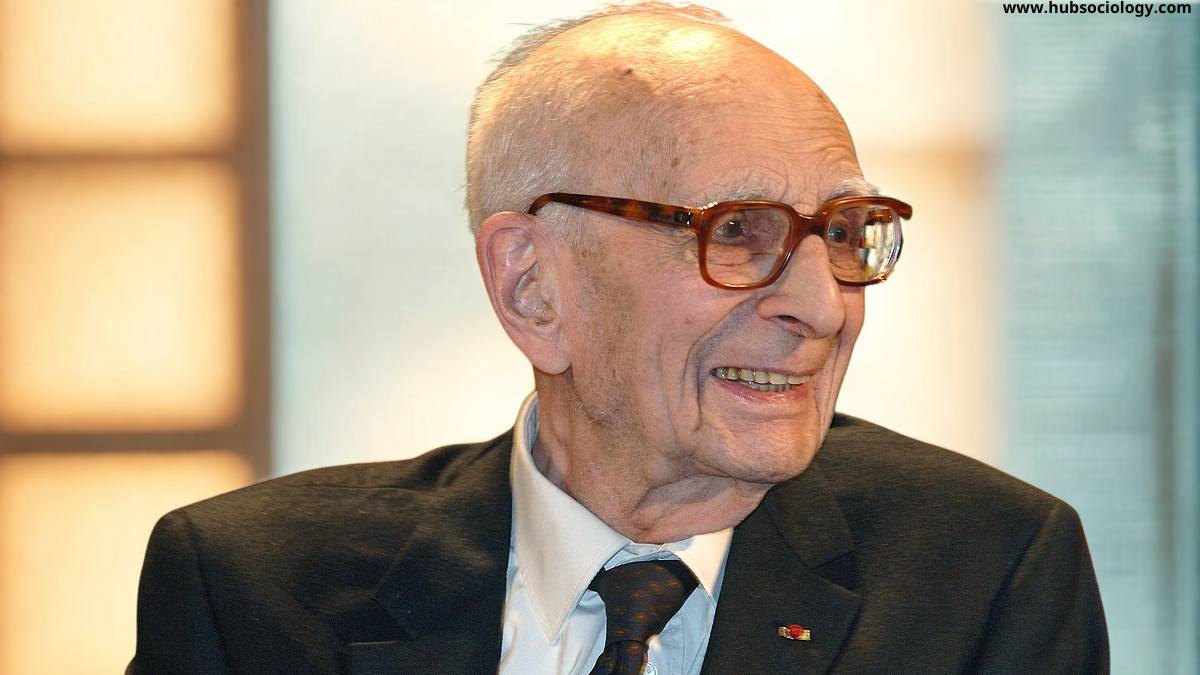Introduction on Claude Lévi-Strauss
Claude Lévi-Strauss (1908–2009) stands as one of the most influential anthropologists and social theorists of the twentieth century, renowned for developing structuralism in anthropology. Claude Lévi-Strauss work fundamentally transformed the study of culture, kinship, and myth by uncovering the deep mental structures that shape human societies. Drawing inspiration from linguistics, especially the ideas of Ferdinand de Saussure, Claude Lévi-Strauss argued that culture operates like a language, governed by underlying rules and patterns that may not be immediately visible but are universal to human thought.
In Claude Lévi-Strauss classic works such as The Elementary Structures of Kinship, The Savage Mind, Totemism, and the monumental Mythologiques series, he demonstrated how kinship rules, myths, and symbolic classifications are organized around binary oppositions such as nature vs. culture, raw vs. cooked, and male vs. female. Claude Lévi-Strauss concept of alliance theory highlighted marriage as a system of exchange that sustains social cohesion. Through fieldwork among South American tribes, Lévi-Strauss combined ethnography with philosophical insights, showing that so-called “primitive” thought is as logical and structured as modern reasoning.
Though critiqued for being ahistorical and abstract, Claude Lévi-Strauss contributions continue to shape sociology, anthropology, and cultural studies. Understanding Claude Lévi-Strauss is crucial for students of sociology, particularly for UGC NET exam preparation.
Life & Background on Claude Lévi-Strauss
- Claude Lévi-Strauss is best known as a scholar in which field?
a) Functionalism
b) Structuralism
c) Symbolic Interactionism
d) Conflict Theory
Answer: b) Structuralism - Lévi-Strauss was originally trained in which discipline?
a) Sociology
b) Anthropology
c) Philosophy
d) Psychology
Answer: c) Philosophy - Lévi-Strauss was born in which country?
a) France
b) Germany
c) Belgium
d) Switzerland
Answer: a) France - Claude Lévi-Strauss was strongly influenced by the linguistic theories of:
a) Max Weber
b) Ferdinand de Saussure
c) Karl Marx
d) Emile Durkheim
Answer: b) Ferdinand de Saussure - Lévi-Strauss is associated with which century of anthropological thought?
a) 18th century
b) 19th century
c) 20th century
d) 21st century
Answer: c) 20th century
Theories & Concepts of Claude Lévi-Strauss
- The main methodological approach of Lévi-Strauss is:
a) Positivism
b) Hermeneutics
c) Structural analysis
d) Symbolic interactionism
Answer: c) Structural analysis - Lévi-Strauss applied structuralism primarily to the study of:
a) Politics
b) Family
c) Myths and kinship
d) Economy
Answer: c) Myths and kinship - Structuralism, according to Lévi-Strauss, seeks to uncover:
a) Social change
b) Historical events
c) Deep structures of human thought
d) Power conflicts
Answer: c) Deep structures of human thought - Claude Lévi-Strauss argued that the human mind operates through:
a) Randomness
b) Binary oppositions
c) Social contracts
d) Class struggle
Answer: b) Binary oppositions - Which of the following is NOT a binary opposition central to Lévi-Strauss’s analysis?
a) Nature vs Culture
b) Raw vs Cooked
c) Male vs Female
d) Capital vs Labor
Answer: d) Capital vs Labor
Kinship & Marriage

- Lévi-Strauss’s major work on kinship is:
a) The Raw and the Cooked
b) Elementary Structures of Kinship
c) Mythologiques
d) Tristes Tropiques
Answer: b) Elementary Structures of Kinship - In his kinship studies, Claude Lévi-Strauss emphasized the importance of:
a) Marriage rules and exchange
b) Economic stratification
c) Political authority
d) Industrial labor
Answer: a) Marriage rules and exchange - Lévi-Strauss’s theory of kinship is based on the principle of:
a) Market exchange
b) Gift exchange
c) Religious exchange
d) Class exchange
Answer: b) Gift exchange - According to Lévi-Strauss, the prohibition of incest is:
a) A social invention of modernity
b) A biological instinct
c) A universal cultural rule
d) A religious commandment
Answer: c) A universal cultural rule - The concept of “alliance theory” in kinship is linked with:
a) Karl Marx
b) Émile Durkheim
c) Claude Lévi-Strauss
d) Bronisław Malinowski
Answer: c) Claude Lévi-Strauss
Myth & Culture

- Which book of Lévi-Strauss focuses on myths?
a) The Savage Mind
b) Elementary Structures of Kinship
c) Tristes Tropiques
d) The Rules of Sociological Method
Answer: a) The Savage Mind - Lévi-Strauss believed myths across cultures share:
a) Random variations
b) Deep structural similarities
c) Political origins
d) Historical uniqueness
Answer: b) Deep structural similarities - The study of myth for Lévi-Strauss is similar to:
a) Political theory
b) Psychoanalysis
c) Linguistic analysis
d) Functionalism
Answer: c) Linguistic analysis - Lévi-Strauss’s Mythologiques is a series of:
a) 2 volumes
b) 4 volumes
c) 5 volumes
d) 6 volumes
Answer: b) 4 volumes - The title The Raw and the Cooked symbolizes:
a) Religious vs Secular
b) Untouched vs Touched
c) Nature vs Culture
d) Rural vs Urban
Answer: c) Nature vs Culture
Methodology & Philosophy

- Lévi-Strauss’s structuralism can be seen as:
a) Diachronic (historical) analysis
b) Synchronic (timeless) analysis
c) Evolutionary approach
d) Functionalist approach
Answer: b) Synchronic (timeless) analysis - He argued that culture is structured like:
a) Economics
b) Language
c) Religion
d) History
Answer: b) Language - The methodological inspiration for structuralism came from:
a) Psychoanalysis
b) Linguistics
c) Marxism
d) Political theory
Answer: b) Linguistics - Structuralism seeks to identify:
a) Surface events
b) Deep grammar of culture
c) Historical causes
d) Political ideology
Answer: b) Deep grammar of culture - Lévi-Strauss used which kind of logic to study myths?
a) Symbolic logic
b) Dialectical logic
c) Binary logic
d) Inductive logic
Answer: c) Binary logic
Key Works of Claude Lévi-Strauss
- Tristes Tropiques is primarily:
a) A novel
b) An anthropological memoir
c) A sociological theory book
d) A political manifesto
Answer: b) An anthropological memoir - Which book is considered Lévi-Strauss’s critique of evolutionism?
a) The Savage Mind
b) Structural Anthropology
c) Totemism
d) The Elementary Structures of Kinship
Answer: a) The Savage Mind - Totemism (1962) argues that totemic classifications are:
a) Primitive irrationality
b) Logical systems of thought
c) Religious delusions
d) Economic categories
Answer: b) Logical systems of thought - Which book of Lévi-Strauss starts with the famous line “I hate travelling and explorers”?
a) Tristes Tropiques
b) The Savage Mind
c) Mythologiques
d) Structural Anthropology
Answer: a) Tristes Tropiques - Structural Anthropology was published in:
a) 1949
b) 1958
c) 1962
d) 1973
Answer: b) 1958
Influence & Legacy
- Lévi-Strauss has been compared to which psychoanalyst?
a) Freud
b) Jung
c) Lacan
d) Adler
Answer: c) Lacan - He extended structuralist methods to:
a) Kinship and myths
b) Political economy
c) Industrial sociology
d) Class analysis
Answer: a) Kinship and myths - Lévi-Strauss influenced which French intellectual movement?
a) Existentialism
b) Post-structuralism
c) Positivism
d) Phenomenology
Answer: b) Post-structuralism - According to Lévi-Strauss, anthropology reveals:
a) Social conflict
b) Historical evolution
c) Universal structures of the human mind
d) Political domination
Answer: c) Universal structures of the human mind - Lévi-Strauss’s works often emphasize:
a) Diversity of culture only
b) Uniformity of human thought beneath diversity
c) The uniqueness of Western culture
d) Historical change
Answer: b) Uniformity of human thought beneath diversity
Criticism & Debates on Claude Lévi-Strauss
- Critics argue that Lévi-Strauss’s structuralism is:
a) Too historical
b) Too functionalist
c) Too abstract and ahistorical
d) Too political
Answer: c) Too abstract and ahistorical - Feminist anthropologists criticized Lévi-Strauss for ignoring:
a) Marriage
b) Women’s agency in kinship exchange
c) Rituals
d) Myths
Answer: b) Women’s agency in kinship exchange - Marxist critics accused Lévi-Strauss of neglecting:
a) Class and economy
b) Kinship rules
c) Myths
d) Religion
Answer: a) Class and economy - Which anthropologist critiqued Lévi-Strauss’s view on myths?
a) Malinowski
b) Geertz
c) Radcliffe-Brown
d) Evans-Pritchard
Answer: b) Geertz - One limitation of Lévi-Strauss’s approach is:
a) Overemphasis on history
b) Neglect of underlying structures
c) Neglect of social change and context
d) Focus on women’s role
Answer: c) Neglect of social change and context
Miscellaneous
- Claude Lévi-Strauss served as professor at:
a) Harvard University
b) Collège de France
c) Oxford University
d) University of Chicago
Answer: b) Collège de France - He was part of which intellectual tradition?
a) French structuralism
b) British functionalism
c) American culturalism
d) German historicism
Answer: a) French structuralism - Lévi-Strauss conducted fieldwork mainly in:
a) Africa
b) South America
c) North America
d) Asia
Answer: b) South America - The tribes studied by Lévi-Strauss in Brazil included:
a) Nambikwara and Bororo
b) Zulu and Tswana
c) Inuit and Apache
d) Toda and Bhil
Answer: a) Nambikwara and Bororo - Lévi-Strauss lived to be:
a) 75 years old
b) 85 years old
c) 90 years old
d) Over 100 years old
Answer: d) Over 100 years old (He died at 100 in 2009)
- Lévi-Strauss’s approach is closest to which concept of language?
a) Langue and parole
b) Signifier and signified
c) Speech act theory
d) Generative grammar
Answer: a) Langue and parole - His method of analyzing myths is called:
a) Comparative mythology
b) Structural analysis of myth
c) Evolutionary mythology
d) Ritual functionalism
Answer: b) Structural analysis of myth - Lévi-Strauss argued that cooking transforms raw nature into:
a) Social culture
b) Industrial society
c) Political order
d) Economic production
Answer: a) Social culture - The study of “bricolage” in The Savage Mind refers to:
a) Rational scientific method
b) Creative re-use of available materials
c) Capitalist innovation
d) Religious rituals
Answer: b) Creative re-use of available materials - For Lévi-Strauss, structuralism is a method to uncover:
a) Surface culture
b) Deep mental structures that shape human universals
c) Class struggle
d) Religious morality
Answer: b) Deep mental structures that shape human universals
Do you like this this Article ? You Can follow as on :-
Facebook – https://www.facebook.com/hubsociology
Whatsapp Channel – https://whatsapp.com/channel/0029Vb6D8vGKWEKpJpu5QP0O
Gmail – hubsociology@gmail.com
